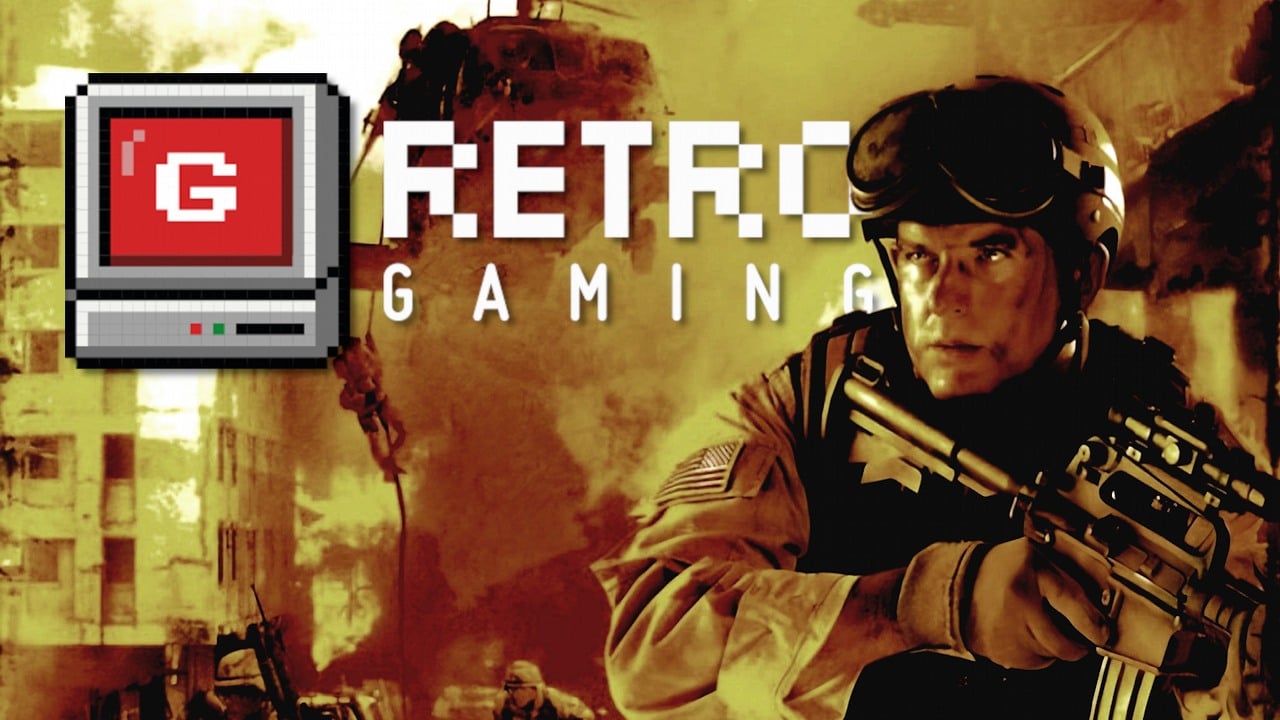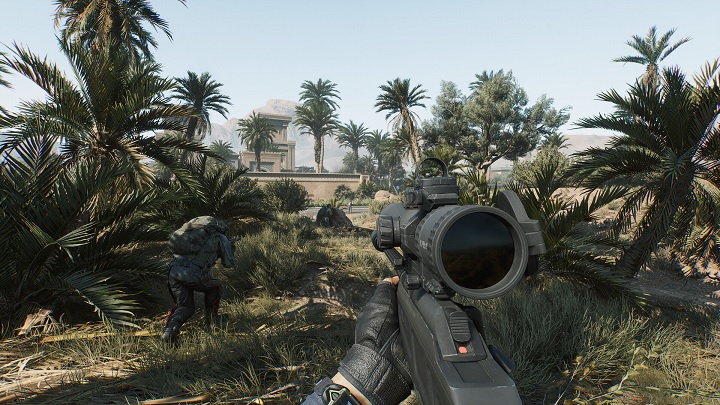
I remember playing Delta Force: Black Hawk Down back in 2003 when it was first released, and boy, did it take me back! The game was quite challenging, with enemies that seemed to pop out from everywhere and teammates who were as reliable as a jittery squirrel on a tightrope.
A dedicated following of enthusiasts, who appreciated the series despite its shortcomings, were drawn to Delta Force. However, the brand didn’t build a reputation strong enough to compete with heavyweights like Rainbow Six or Ghost Recon. In an attempt to revitalize the series in 2003, the studio behind it, NovaLogic, aimed to create a more immersive gaming experience by making Delta Force: Black Hawk Down more cinematic in nature.
It’s important to recall the qualities that made Delta Force stand out during its heyday, as it has now undergone a revival.
Somali hell
To begin, it’s important to note that while the game Delta Force: Black Hawk Down seems to have drawn inspiration from the film of the same name (itself an adaptation of a book sharing the same title), it is not a literal adaptation of the source material.
In the later levels of the game, we experienced firsthand what the title “Black Hawk Down” signified. However, throughout other parts of the game, there were allusions to this well-known piece, with the game portraying similar events and military operations.
Reminiscing about “Delta Force: Black Hawk Down”, I was transported back to Somalia in the early ’90s, a nation devastated by civil war. Amidst the turmoil, the Unified Task Force stepped in, an international force mandated to provide aid and restore order. As part of this mission, American forces – codenamed Task Force Ranger – were dispatched to the scene with a specific objective: to capture Mohamed Farrah Aidid, a key Somali militia leader implicated in attacks against international forces, during Operation Gothic Serpent.

New Delta Force
In the sixth title bearing the “Delta Force: Black Hawk Down” label, players might have found themselves taken aback due to a change in gameplay dynamics. Instead of the non-linear missions set in expansive, open-structure maps, this installment primarily featured more linear stages that were heavily scripted.
During that period of conflict, our Task Force Ranger group found ourselves traversing diverse regions of Somalia, from the Jubba Valley to its capital city. In subsequent operations, we undertook typical goals, including providing escorts, neutralizing designated targets (often by breaching their defenses), and destroying specific assets. At times, we also had to operate covertly.
In these locations, there wasn’t a straightforward path layout; instead, multiple routes often led to our destinations. Our mission goals were constantly marked on the mini-map for easier navigation through the terrain. It was intriguing that the title seemed non-linear, permitting us to choose the sequence of missions we tackled (usually, we had a choice among three stages). Nevertheless, it turned out by the game’s end that this sense of non-linearity was merely an illusion. The truth was, completing the story necessitated finishing all the operations.
As a devoted gamer, I must say that what sets Delta Force: Black Hawk Down apart from many contemporary first-person shooter games is its unique feature that lets me revisit stages I’ve already conquered. This game isn’t just about the immersive 9 to 10-hour campaign; it also boasts a multiplayer mode, enabling me to team up with other players. The multiplayer experience encompasses thrilling modes like Deathmatch and King of the Hill.

Work tools of every soldier
Before diving into the work, we first gained a thorough understanding of not just the tasks assigned for a particular mission by the command, but also the circumstances at the location, such as the strength of the opposition forces. This information was crucial since we made our gear choices based on it.
A diverse array of weapon options were available, ranging from modern assault rifles such as the CAR-15 and M16, to stealthy MP5 submachine guns with silencers, and even trusty old shotguns. Grenades and explosive charges could also be handy in certain situations. During night missions, a night vision device was essential. Lastly, it’s important to note that the game occasionally enabled us to pick up a heavy machine gun for intense enemy fire.
Problems on the front
In discussing Delta Force: Black Hawk Down, we can’t overlook the pivotal aspect – the intense battles. The adversaries we encountered weren’t particularly cunning, but that didn’t make them any less dangerous. In fact, they often outmatched us in numbers, which made survival a constant challenge. Furthermore, enemies equipped with sniper rifles or RPGs posed an extra threat since they had the potential to inflict greater damage compared to their regular counterparts.
In simpler terms, the AI controlling our enemies and teammates wasn’t always reliable. It was challenging to issue straightforward commands, as they often encountered difficulties following them. This resulted in instances where we had to handle everything ourselves due to a lack of trust in their performance, given that the game didn’t provide an option for us to directly control other squad members.
Another problem was… civilians, who often put themselves under our guns. Of course, this added realism to the game, but on the other hand, it significantly complicated the game because, in the heat of battle, it was difficult to distinguish them from enemies. The situation was made more complex by the fact that the sight always had the same color, regardless of whether we were aiming at a civilian or an enemy.

Further fate of the brand
Delta Force: Black Hawk Down initially debuted on personal computers in March 2003, and later made its way to PlayStation 2 and the original Xbox, approximately two years afterward. Among NovaLogic’s games, the PC version garnered the highest ratings, boasting an average score of 77/100 as reported by Metacritic. The other platforms received scores generally around 6 points.
In 2004, the game was augmented by the Team Sabre DLC, transporting players to Colombia and Iran. The following year saw the launch of another Delta Force, titled Xtreme. Four years later, this game had a successor – Xtreme 2. However, the series went dormant for some time, and in 2016, the studio behind it, NovaLogic, ceased operations.
In August 2023, we were informed that the Delta Force series would carry on. The initial release following a significant hiatus was expected to be Delta Force: Hawk Ops, developed by TiMi Studio Group, which later became simply known as Delta Force. Initially, the game was intended to emphasize multiplayer, but the developers also assured fans of a single-player campaign inspired by the events portrayed in Black Hawk Down.

How to play Delta Force: Black Hawk Down today?
As of now, you won’t find the game “Delta Force: Black Hawk Down” on Steam or GOG.com. However, the expansion pack “Team Sabre” is available for purchase through Valve’s digital store. Do keep in mind that this expansion pack necessitates having the base game.
The cost of a previously owned hardcover book titled “Delta Force: Black Hawk Down” can vary based on its condition.
Read More
- FARTCOIN PREDICTION. FARTCOIN cryptocurrency
- SUI PREDICTION. SUI cryptocurrency
- Best Crosshair Codes for Marvel Rivals
- All Madden 25 Madvent Rewards & How to Get Them
- Baldur’s Gate 3: Why It’s So Good
- Path Of Exile 2: How To Get Uncut Skill Gems
- League of Legends Fans Adore Heimerdinger’s Voice Actor Singing ‘Spin the Wheel’
- Honkai: Star Rail Voice Actor Change Sparks Mixed Reactions from Fans
- Team Fight Tactics (TFT): Players Weigh In on Akali Buffs and Nerfs
- League of Legends: A Deep Dive Into the Arcane Fractured Jinx Skin Debacle
2024-12-09 15:02